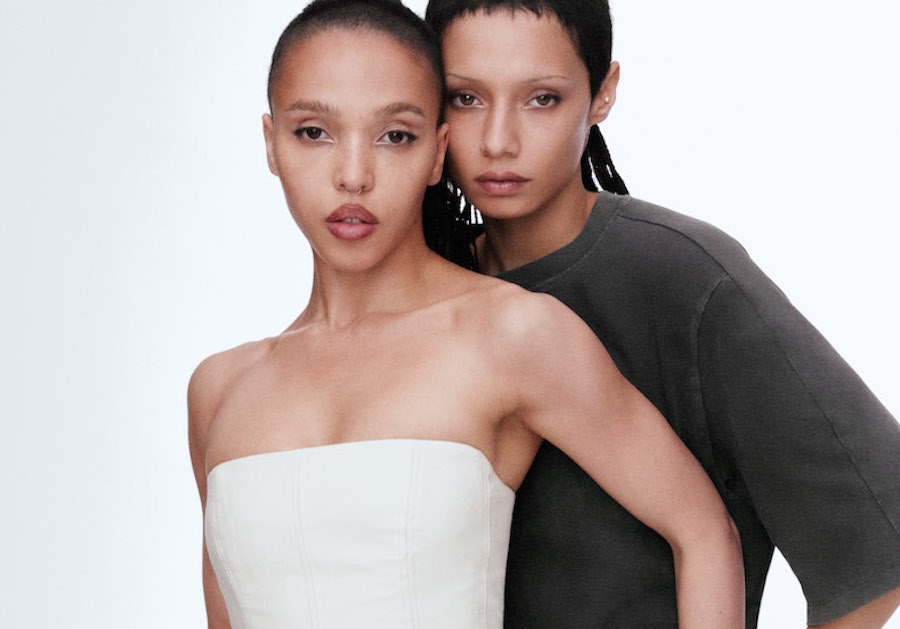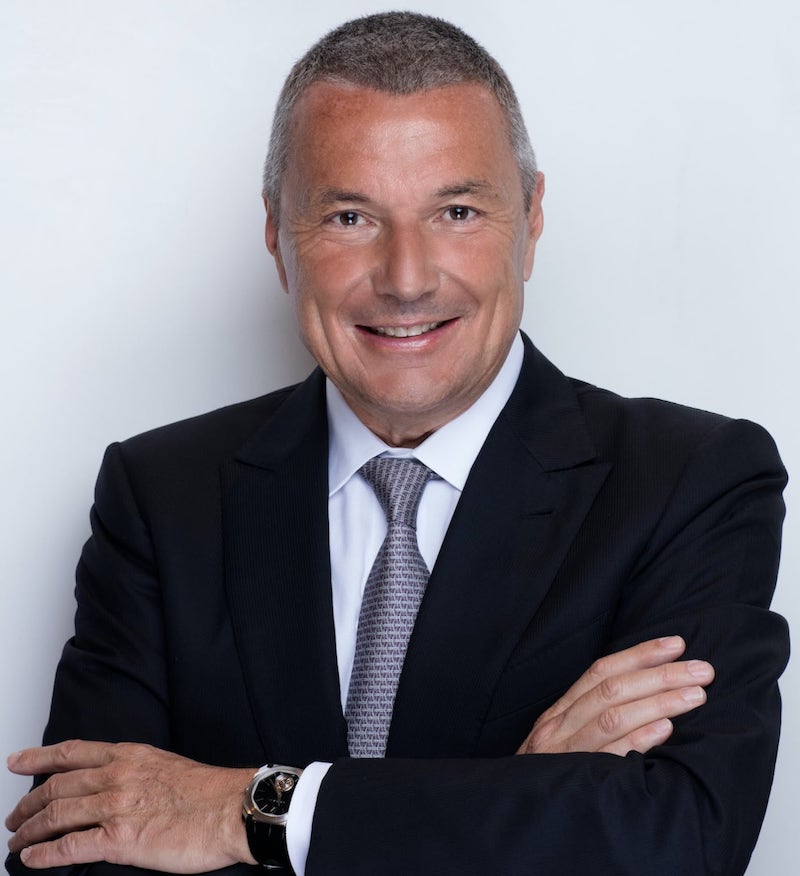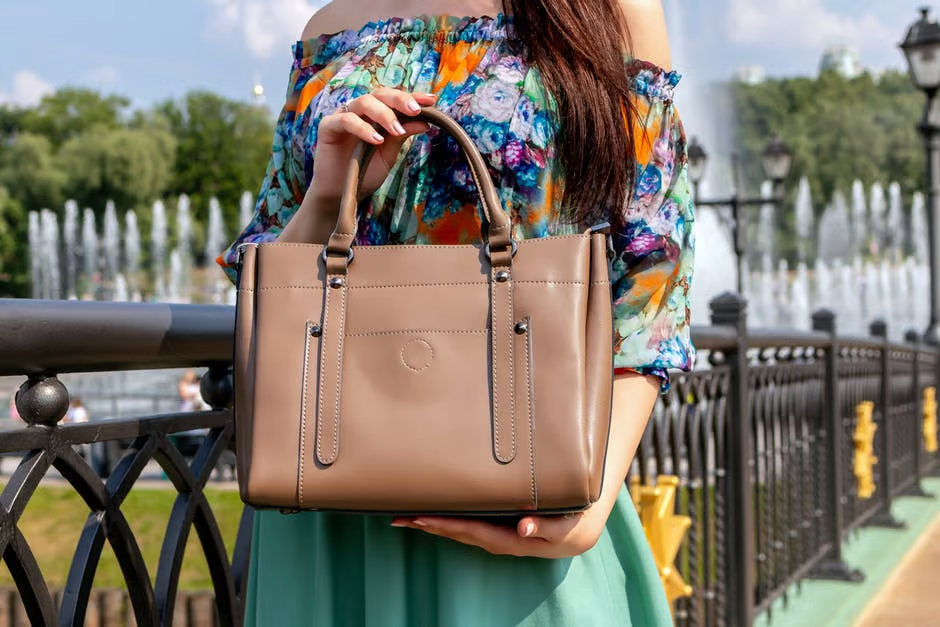Power suits with bold shoulder pads and sharp silhouettes—iconic 80s fashion trends that embody confidence and timeless style, proving that some statements never go out of fashion.

The power suits defined 80s fashion trends
The 1980s were a time when fashion broke free from the constraints of previous decades, embracing a spirit of boldness, individuality, and extravagance. 80s fashion trends weren’t just about what people wore—this decade saw an explosion of styles that blurred the lines between mainstream and subculture.
Power suits with big shoulder pads and structured silhouettes embodied confidence and authority. Vogue’s October 1985 issue summed up the decade’s vibe with a fashion spread on power dressing photographed by Helmut Newton. “…The women dressing to be noticed…and gain the upper hand. Men can fuel fantasy. But women set the direction…and the tone. You get the sense that things are changing.”’
Punk-inspired leather jackets and ripped denim channelled a more rebellious energy. The 80s was a time when the mantra “more is more” ruled the runway. That said, preppy culture influenced by Ivy League arrested the attention of the privileged while Jane Fonda workout videos channelled fitness fashion into the mainstream.
An overview of 1980s iconic fashion trends
Power Dressing
The Seventies’ Women’s Liberation Movement, in particular the Equal Credit Opportunity Act of 1974, levelled the playing field and women began making their presence felt in higher management positions. Subsequently, power dressing emerged as the most defining fashion trends of the Eighties. The style sent out a message — women wanted power and they were dressing the part. The perfect example is TV show Dynasty, where Joan Collins channelled power-dressing with evening gowns, shoulder pads, and dramatic makeup, designed to convey authority and confidence.
Per Fashion History: ‘“As more women entered traditionally male-oriented work environments, they found it advantageous to dress as though they were in command, and sure of their sexuality. This meant jackets with heavily padded shoulders, vibrant colours, big hair-dos, bold accessories, and shoes with pointed toes and spiked heels.”’
Claude Montana, known as “the King of the Shoulder Pad”, was credited with defining the “power dressing” era of the 1980s and fashion legends like Emanuel Ungaro, Theirry Mugler,Jean Paul Gaultier, and Yves Saint Laurent began designing suits and skirt suits. As the decade progressed, power dressing evolved with soft fabrics and designs, but the core message of strength and sophistication remained constant.
Aerobic Wear
Aerobic wear became a fashion phenomenon in the 1980s, thanks to the explosion of fitness culture led by Jane Fonda and Richard Simmons. Per Vogue: ‘Meanwhile, clothing labels were pumping out clothing made for working out (Lycra body suits were worn over leggings in punchy colours and were accessorised with leg warmers and sweatbands) and celebrities started cashing in with workout videos. Released in 1982, Jane Fonda’s workout video became one of the best-selling VHS tapes of all time.’
The 80s fashion trend was characterised by brightly coloured leotards, high-cut bodysuits, and leggings, often layered with leg warmers and oversized sweatshirts. This fitness-inspired look wasn’t just reserved for the gym; it made its way into mainstream fashion, reflecting the decade’s obsession with fitness and an active lifestyle. The fabrics used in aerobic wear were typically spandex and Lycra, which provided the stretch and flexibility needed for exercise while also accentuating the body’s form.
Aerobic wear’s popularity was further boosted by the rise of home workout videos and television fitness programs, which brought the style directly into living rooms across America. This fashion trend blurred the lines between function and fashion, allowing people to transition from workout to casual outings without changing outfits. Aerobic wear became so influential that it inspired fashion designers to incorporate sports- influenced elements into their collections, bringing fitness chic into the mainstream.
Punk Fashion

Punk style was a rebellion against mainstream fashion
Punk style was a rebellion against mainstream fashion, characterised by its edgy, anti-establishment design aesthetic. Originating from the underground music scene, the style featured ripped jeans, leather jackets, and band T-shirts, often adorned with pins, patches, and studs. Punk fashion was all about DIY ethics, with followers customising their apparel and accessories to create unique looks. The emphasis was on subverting traditional fashion norms, and accessories like safety pins, chains, and Doc Martens boots became iconic elements of this defiant style.
Per Vogue: ‘Punk rock flourished in London—with fishnets, chains, and studs as the go-to accessories. Worn alongside leather separates and easy silhouettes, the looks are quintessentially ’80s. Just add industrial-style jewellery from the likes of brands like Justine Clenquet, Martine Ali, or Chopova Lowena to bring the style into the present day.’
Madonna is perhaps the ultimate 80s fashion icon who channelled punk-chic effortlessly. She pioneered 80 fashion trends like lace tops, fingerless gloves, and layered jewellery. Her “Like a Virgin” look—corsets, tulle skirts, and crucifix necklaces—became synonymous with the decade’s rebellious fashion. Cyndi Lauper’s playful punk style channelled the spirit of the 80s. Known for her brightly coloured hair, mismatched outfits, and quirky accessories, she popularised a fun, punk-inspired look that celebrated individuality and creativity.
Hair and makeup were important to the punk look. Bold, brightly coloured hairstyles—often spiked or shaved—were paired with heavy eyeliner and dark lipstick, creating a dramatic appearance. The look was intentionally unpolished, rejecting the sleek glamour of the mainstream. Punk fashion was not just a style but a statement of identity and ideology, challenging societal conventions and embracing individualism and self-expression.
Preppy Style
Preppy style was all about exuding an air of affluence and sophistication, a trend that made its mark in the hallowed halls of Ivy League campuses in the 1980s. This fashion trend was defined by clean, classic lines and a polished appearance, with staples like polo shirts, cable-knit sweaters, pleated skirts and chinos taking centre stage.
Luxury fashion brands like Perry Ellis and Ralph Lauren turned to classic styles such as blazers, button downs and hand-knit sweaters to create casually elegant womenswear. In her book, Seven Sisters Style, Rebecca C. Tuite writes, “Lauren’s interpretation of the collegiate look was never a costume or a disguise; it was an understated appreciation of good, classic style…”
The preppy style extended beyond clothing to embody a lifestyle associated with privilege and leisure. This was reflected in the popularity of sportswear for activities like tennis, golf, and sailing, which became integral to the preppy wardrobe. The fashion trend also embraced well-tailored, high-quality pieces that conveyed a sense of tradition and social status. As the decade progressed, preppy style evolved to include more casual elements, such as rolled-up sleeves and popped collars, making it accessible to a broader demographic while maintaining its understated elegance.
The preppy look is experiencing a revival at Celine Spring Summer 2024. Per WWD: ‘building blocks included roomy tailored jackets, some with patched elbows; boxy cropped jackets, flared jeans and microscopic minis… A vintage, make-do-and-mend attitude came in the shape of a cream slip dress with a crochet top; a fuzzy leopard print coat; diaphanous lacy blouses or corset style tops. The designer teamed those delicate beauties with jeans, or layered them under shrunken chubbies and tracksuit tops….’

Preppy style made its mark in the hallowed halls of Ivy League campuses.
10 FAQs on Recreating Iconic 1980s Fashion Trends for Women
- How can I recreate the classic 1980s preppy look?
To achieve the preppy look, focus on clean, tailored pieces like polo shirts, button-down blouses, and cable-knit sweaters. Pair these with chinos, pleated skirts, or tailored blazers. Stick to a pastel colour palette, with shades like baby blue, pink, and mint green, and accessorise with loafers or boat shoes. Adding a silk scarf or a pearl necklace can complete the polished, sophisticated vibe.
- What are the key elements of 1980s punk fashion, and how can I incorporate them into my wardrobe?
Punk fashion in the 80s was all about rebellion and DIY aesthetics. Look for ripped jeans, leather jackets, and band T-shirts. Add studs, patches, or safety pins to your clothing for a more personalised touch. Footwear like Doc Martens or combat boots, paired with fishnet stockings, can enhance the edgy look. Don’t forget bold hairstyles and dramatic makeup to complete the outfit.
- How can I create an authentic 1980s power suit look?
A power suit typically includes an oversized blazer with pronounced shoulder pads, a fitted blouse, and high-waisted trousers or a pencil skirt. Opt for neutral colours like black, navy, or grey, but don’t shy away from bold hues like red or cobalt blue for a more striking appearance. Accessorise with statement jewellery, such as large earrings or a chunky necklace, and finish with a pair of pumps.
- What accessories are essential for the preppy style of the 1980s?
Essential preppy accessories include pearl necklaces, silk scarves, and belts with understated, elegant buckles. Loafers and boat shoes are must-haves, while headbands and pastel-coloured bags can add a finishing touch. Look for classic, timeless pieces that exude sophistication and complement the overall polished look.
- What type of makeup and hair styles complement the 1980s punk fashion?
Punk fashion is all about bold, dramatic makeup and statement hairstyles. Think heavy eyeliner, dark or vibrant eyeshadow, and matte lipstick in shades like deep red or black. For hair, consider bright colours like blue, pink, or green, often styled in mohawk, spikes, or asymmetrical cuts. The goal is to create a look that is intentionally rebellious and non-conformist.
- Can I mix different 1980s fashion trends together, like power dressing and preppy styles?
Absolutely! You can combine elements from different 80s trends to create a unique look. For instance, pair a structured blazer (from the power dressing trend) with a pastel-colored blouse and pleated skirt (preppy style). The key is to balance the contrasting elements so they complement rather than clash, maintaining a cohesive overall appearance.
- What fabrics were popular in 1980s fashion, and how can I incorporate them into modern outfits?
Popular fabrics include denim, leather, spandex, and silk. To incorporate these into modern outfits, consider a leather jacket for a punk-inspired look or a silk blouse for a power suit. Denim can be used in high-waisted jeans and denim jackets, while spandex leggings can add an 80s vibe to casual or athletic wear.
- How can I modernise the 1980s power dressing trend for today’s workplace?
Modernise power dressing by opting for blazers with a more tailored fit and streamlined shoulder pads. Choose high-quality fabrics in neutral tones, and pair them with contemporary pieces like tapered trousers or midi skirts. Keep accessories minimal—perhaps a statement watch or a single piece of bold jewellery—and wear classic pumps or sleek loafers to complete the look.
- What are some must-have items to recreate the 1980s neon trend?
To embrace the neon trend, incorporate items like neon-coloured leggings, oversized T-shirts, or windbreakers. Accessories such as neon scrunchies, belts, and bags can also add a pop of colour without overwhelming your outfit. For a more subtle take, try adding neon accents through makeup, like bright eyeshadow or nail polish.
- How can I incorporate 1980s fashion into my wardrobe without looking outdated?
Focus on incorporating one or two standout 80s pieces into your modern wardrobe. For example, pair a vintage oversized blazer with skinny jeans and a simple T-shirt, or wear a preppy, pastel sweater over a crisp white shirt. The key is to balance retro elements with contemporary ones, ensuring the overall look feels fresh and stylish rather than costume-like.
Read More:
Jasmeen Dugal is Associate Editor at FashionABC, contributing her insights on fashion, technology, and sustainability. She brings with herself more than two decades of editorial experience, working for national newspapers and luxury magazines in India.
Jasmeen Dugal has worked with exchange4media as a senior writer contributing articles on the country’s advertising and marketing movements, and then with Condenast India as Net Editor where she helmed Vogue India’s official website in terms of design, layout and daily content. Besides this, she is also an entrepreneur running her own luxury portal, Explosivefashion, which highlights the latest in luxury fashion and hospitality.








